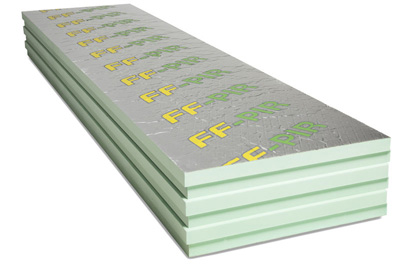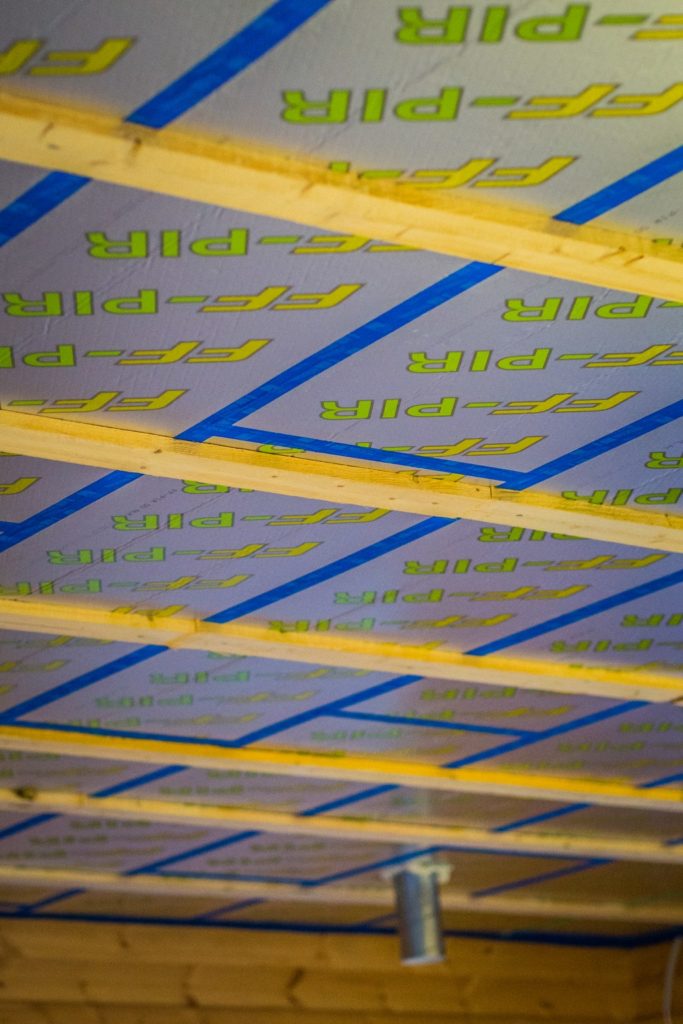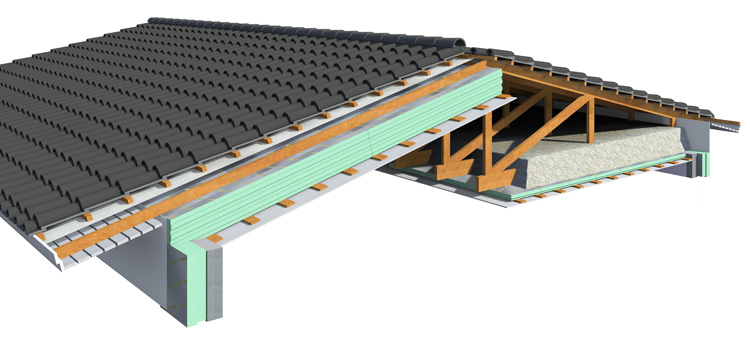INSULATING ROOFS AND CEILINGS USING FF-PIR POLYURETHANE INSULATION
FF-PIR insulation products used in roofs boost the efficiency of construction, as the installed insulation is among the thinnest options available on the market. FF-PIR insulation ensures quick installation, requires less lifting of materials onto the roof, and is compatible with almost all roofing solutions on the market. FF-PIR AL insulation products are most commonly used for regular roof structures. FF-PIR AL or FF-PIR BI, which includes a bitumen laminate that can be used to install bitumen sheeting directly over the insulation panels, are used for low pitch roofs.
FF-PIR insulation products are suitable for new construction, low-energy, passive and zero-energy houses, and for adding supplementary thermal insulation to older buildings, where it allows for minimal structural thicknesses and maximal thermal insulation.
FF-PIR AL, FF-PIR PL, and FF-PIR BI insulation products are excellently suited for use with the various frame materials and shapes of roofs. The frame could consist of wood, steel, concrete (double T or hollow-core slab), or lightweight concrete (Siporex), and the roof type could be sloping, low pitch, or flat. The FF-PIR insulation products also provide an easy option for creating energy efficient structures with lattice trusses.




VAPOR BARRIER AND INSULATION IN ONE PRODUCT
In a timber framed roof, FF-PIR insulation products can also be used as an interior vapor barrier layer, in a solution where the panels are covered with the amount of mineral wool necessary to achieve the desired U value. This type of solution is very common and cost-effective when the roof is constructed with trusses.
The structures do not require separate air or vapor barriers. The aluminum or plastic laminate on the surface of the FF-PIR insulation products have a very high water vapor resistance and also function as vapor barrier within structures. For the seams and joints between panels, we recommend using elastic sealing foam and vapor barrier or aluminum tape that are suitable for joints on the inside. Diffusion-open cloth tapes designed for outdoor use should be used for sealing the joints between panels on the exterior side.

SOME EXAMPLE STRUCTURES ARE PRESENTED IN THE BELOW CHART
Comparison of insulation thickness
| Framework | Insulation/framework | FF-PIR | U value W/m2K |
| Wood | FF-PIR 150 mm in between | FF-PIR 100 mm below | 0,09 |
| Wood | FF-PIR 150 mm in between | FF-PIR 170 mm below | 0,07 |
| Wood | Mineral wool 400 mm | FF-PIR 30 mm below | 0,09 |
| Wood | Mineral wool 350 mm | FF-PIR 120 mm below | 0,07 |



